01 Apr Element of Design: Texture
Texture is a subtler element and can be overlooked in a design that focuses more on furniture and colors. However, texture, or how something feels (or looks like it feels), greatly affects the weight and interest of a space. All surfaces have a texture: matte, shiny, rough, smooth, dappled, furry, slick and etc. What this element brings to a design is variety, tactility and definition.
Putting together a room you want to reach out and touch is the goal with textures. Including many different materials makes a space interesting. I like to layer and combine them, rather than using one or the other; smooth and rough, or shiny and matte together create a visually more stimulating design for your eye to look at. Rough surfaces tend to be warmer and feel denser or heavier. Shiny is reflective, cooler and lighter. Combining opposites balances light and heavy, cool and warm so everything does not have the same feel. If the design allows for only one texture there is no break, no point of contrast—all rough surfaces will feel too heavy, and all shiny smooth surfaces will hardly have any weight.
In this farmhouse-style kitchen, I layered materials that complemented each other to achieve balance in the room. I laid the floors with ceramic tile, which looked like natural stone, as a contrast to the knotty alder cabinets. The reflective surfaces of the granite countertop, backsplash, and light fixtures also balanced the cabinets and black appliances. The island bar stools have a nice combination of different materials; I used dark faux leather for the seat, and cream embroidered linen for their backs. I carried that natural linen to the window treatment. All these different textures, both subtle and strong, created a visually alive kitchen.
Textures can be brought in with almost anything—walls, floors, backsplashes, fabrics, furniture, rugs, accessories, or pillows—but how you add texture will depend on the space and the trends you like. A neutral shag rug can ground the center of a room; furred accent pillows add rough interest to a smooth couch; bedding can make a bedroom feel airy or cozy. I love mixing metals and wood combinations in kitchens to create movement and depth. A favorite of mine is hanging a silver light fixture over a wooden table, adding bling to a natural tone.
This dining room is an example of how limiting yourself in colors does not mean limiting yourself in interest. The overall home design had a monochromatic color scheme, and here I stayed neutral but changed textures in almost every item for a layered effect. There were many opportunities to play with fabric in this space. I chose a wavy patterned rug that lightened the wood floor; the round chairs have a subtle ethnic pattern which provides contrast for the rug; the two end chairs are a rough velvet, and the drapes are smooth silk. The light fixtures and hardware on the side buffet have a brushed nickel finish, again bringing a lighter material to counter the dark, texture-heavy wood. Even the brushwork in the paintings add texture; the large orange contemporary piece was smooth, while the smaller painting had thick brushstrokes. To keep the reddish wooden floors from overpowering the room, I chose an espresso-type finish on the buffet and the round chairs, rather than having all the wood be the same tone.
In the same house was a spacious basement that had an ample amount of reddish wood in the floors, doors and crown molding. Here I kept to our monochromatic color scheme, and counter-balanced the wood primarily with metal—metal stair railings, hammered metal light fixtures which throw a reflected pattern up on the ceiling, metal chairs, and a smooth metal fireplace. Again I chose darker wood for a new built-in cabinet to contrast the red tones and the rough materials of the couch, pillows and rug.
I love how you can spread a room with texture and create a gorgeous space without relying on a wow-inspiring color palette. Thoughtfully combining rough and reflective surfaces will add depth and complexity to any design, and the result is a rich sense of touch.







No Comments